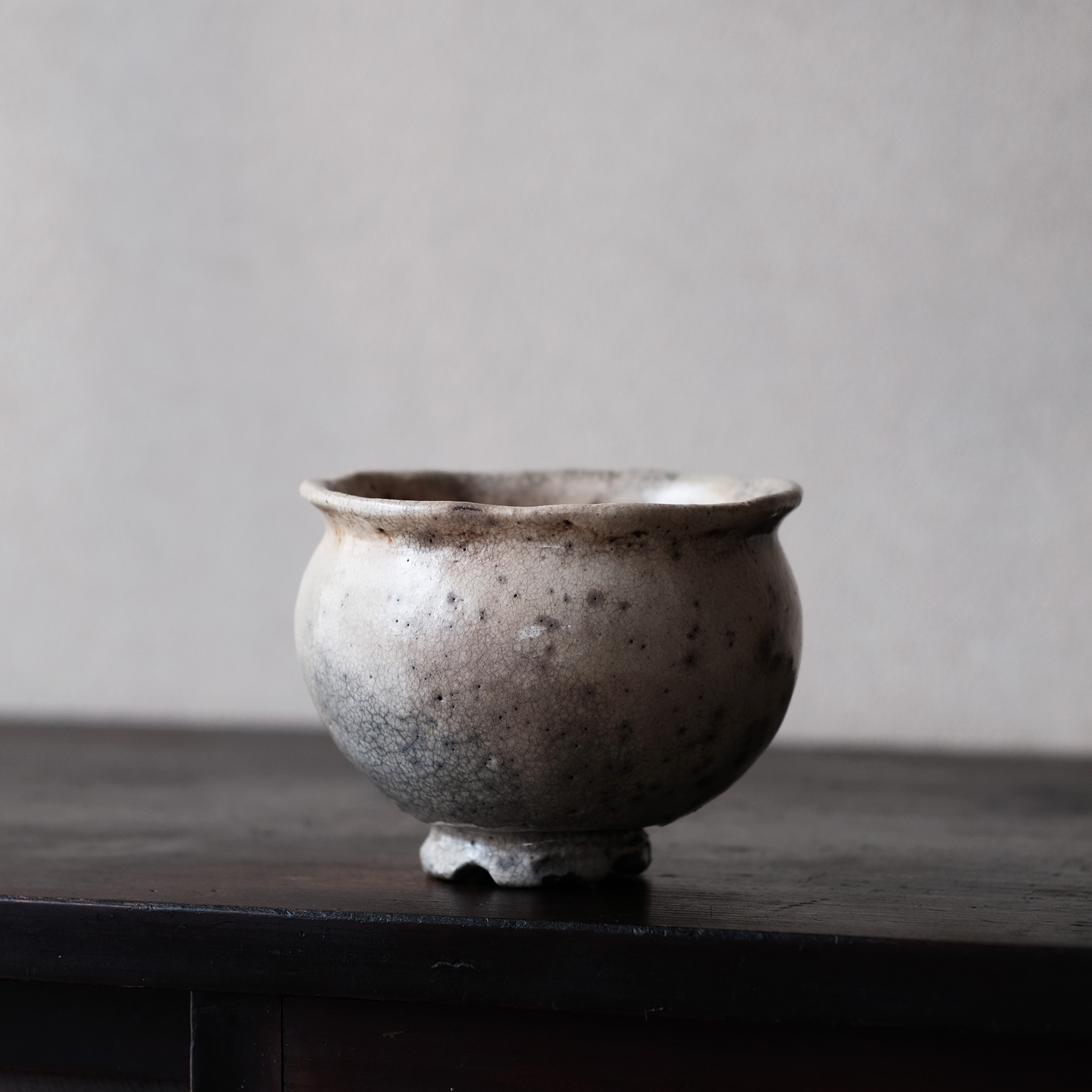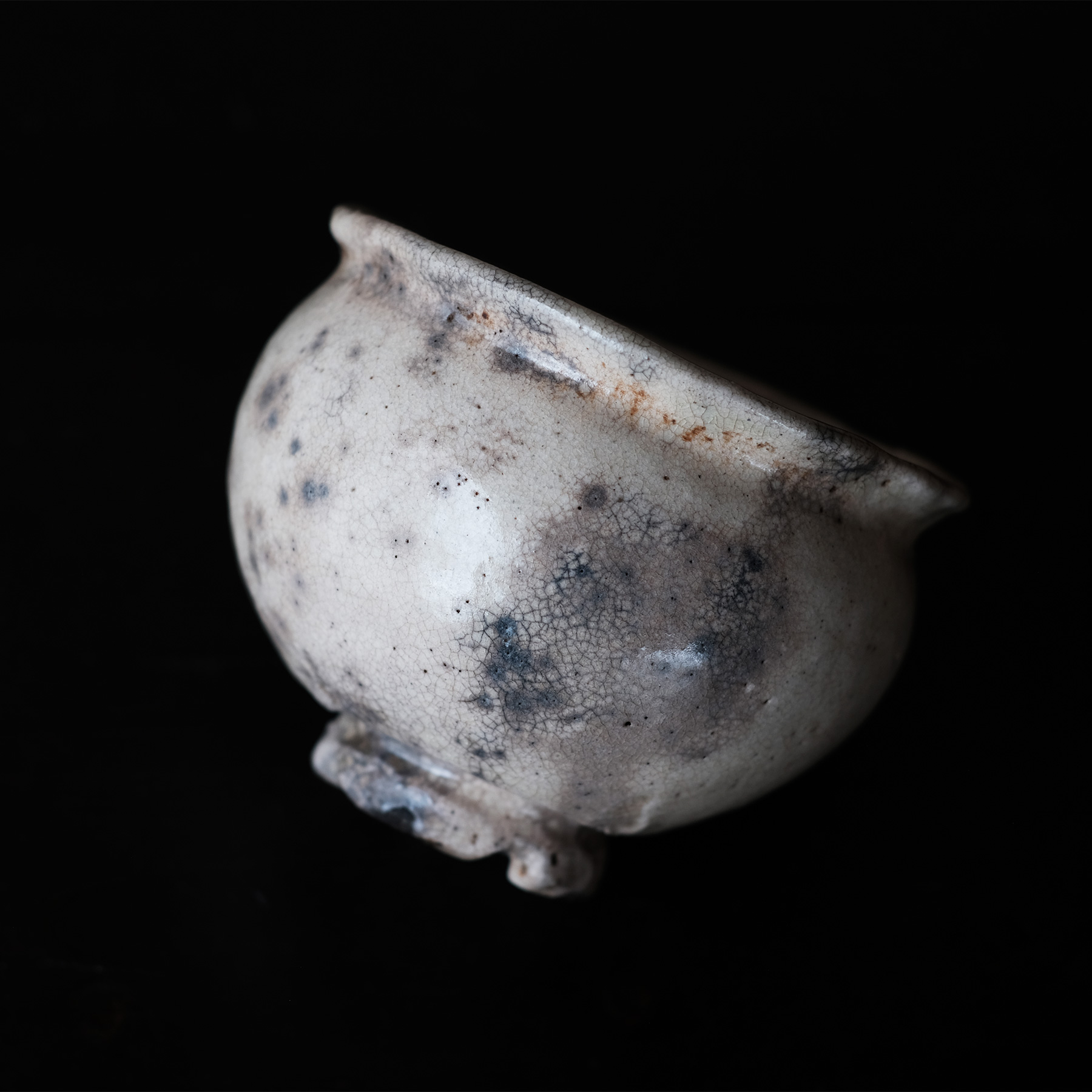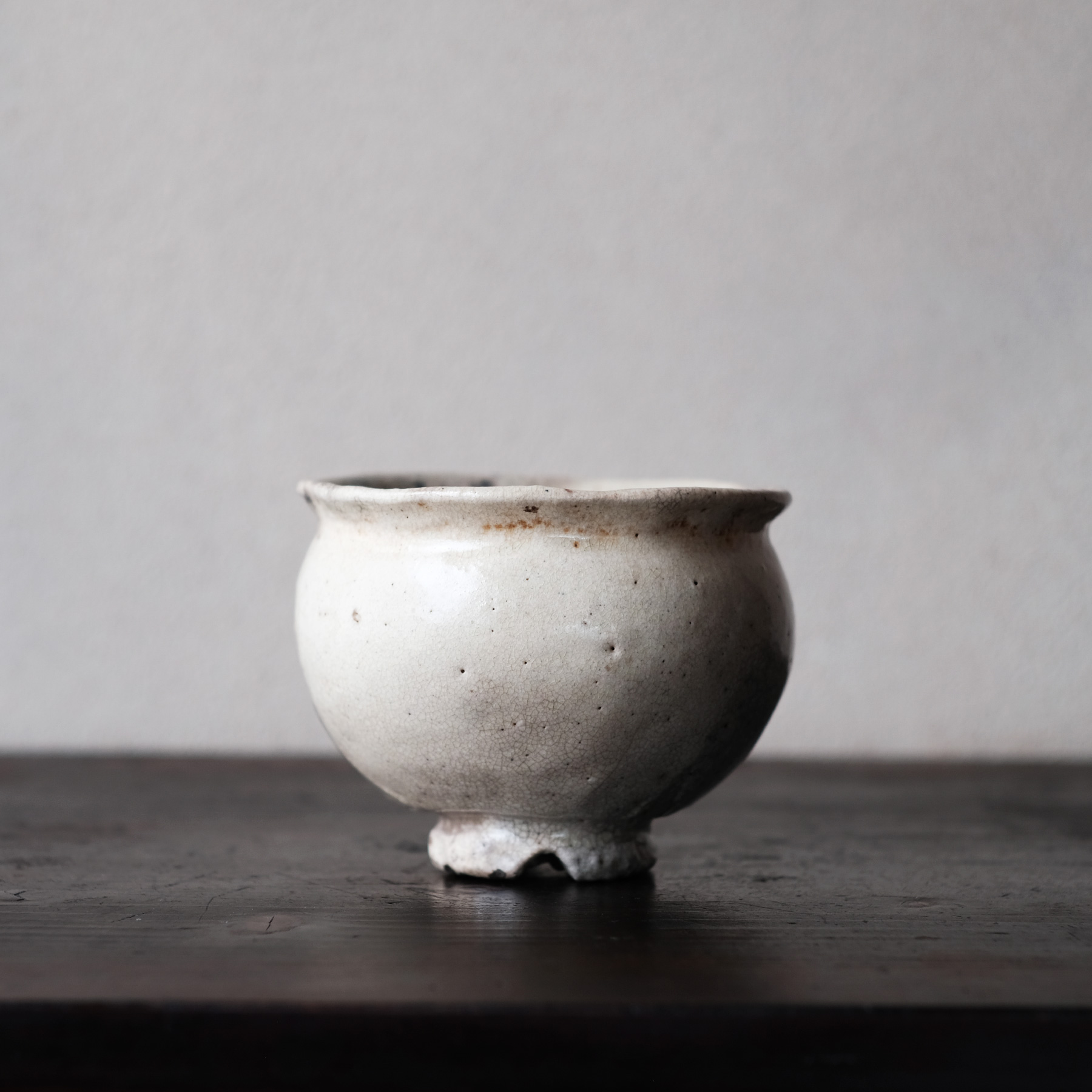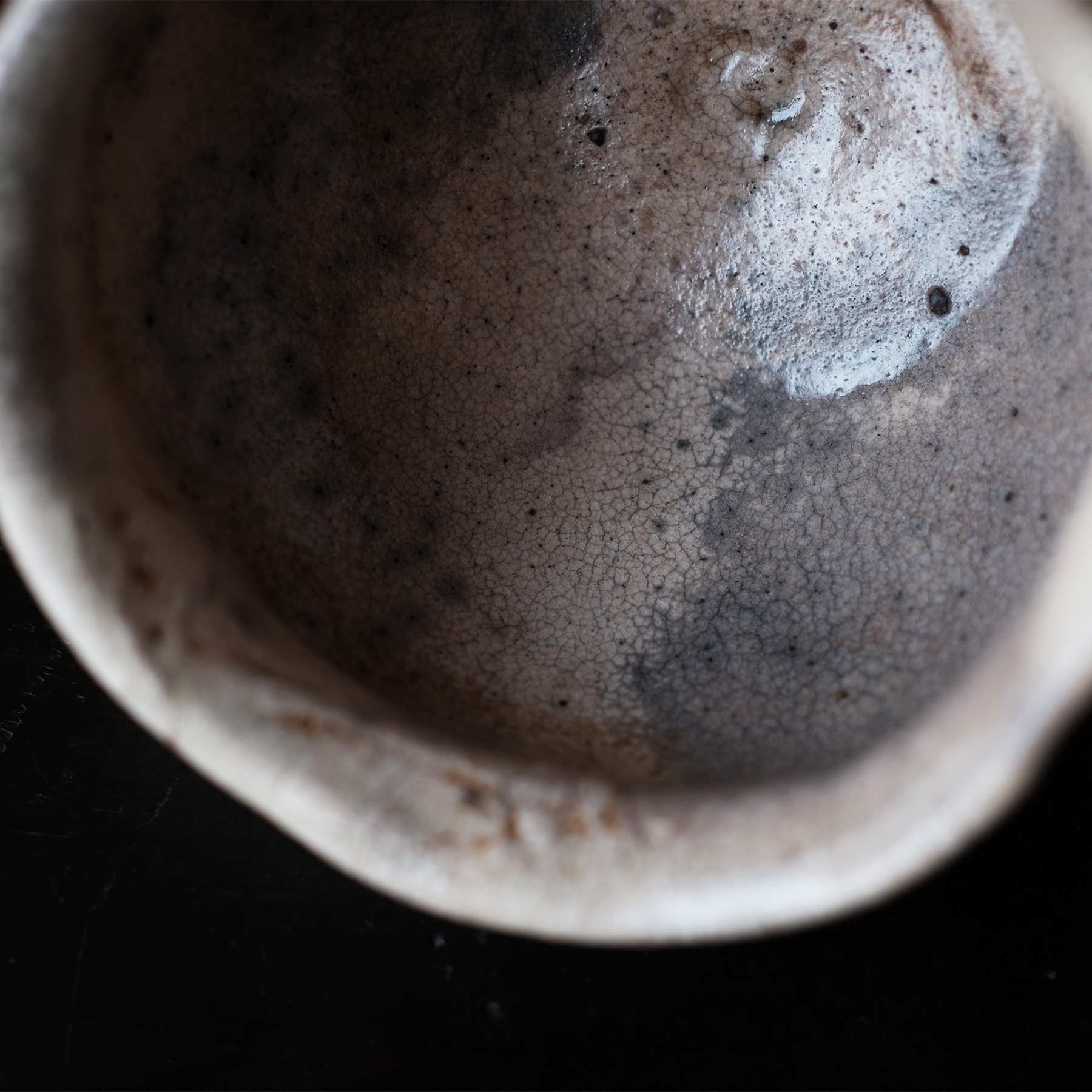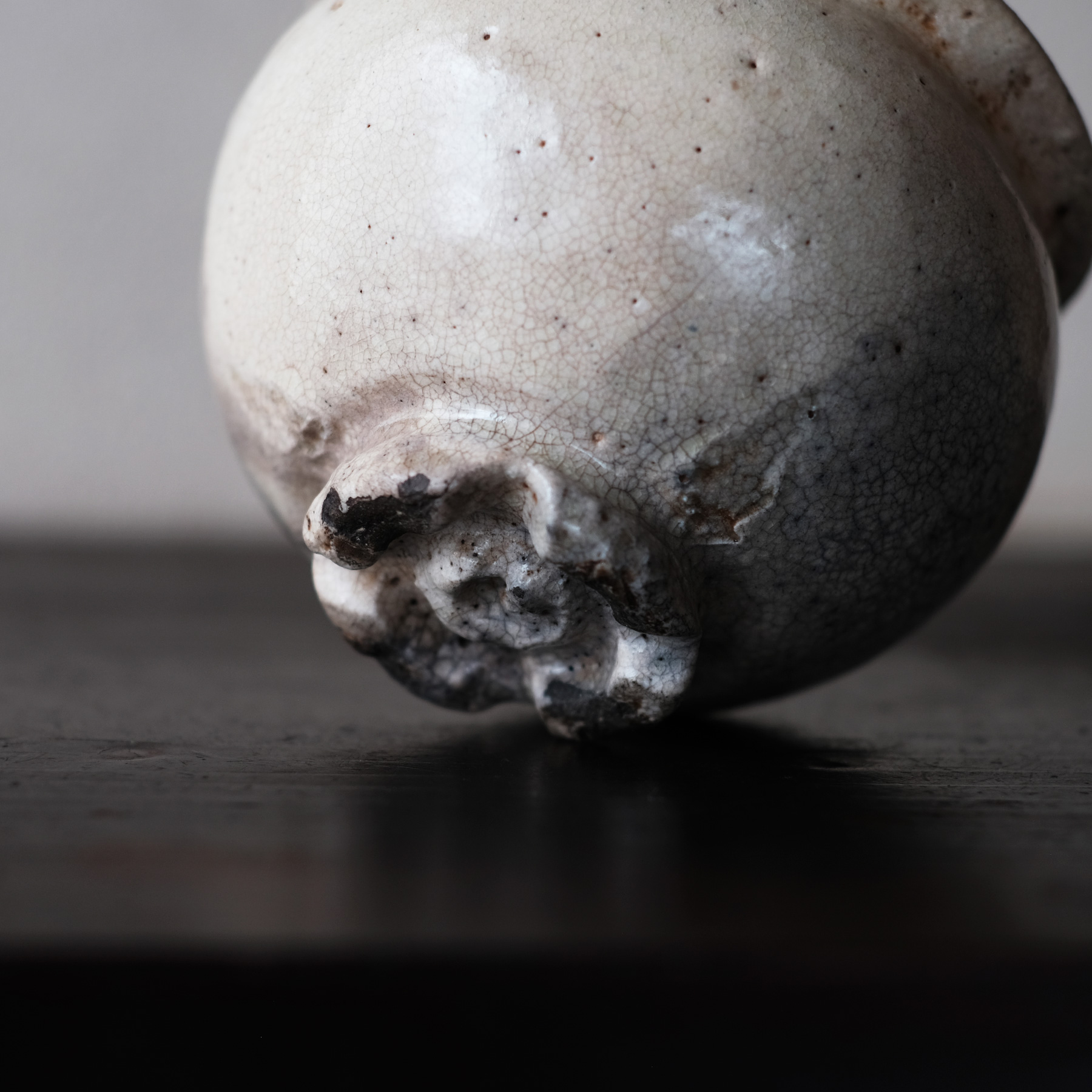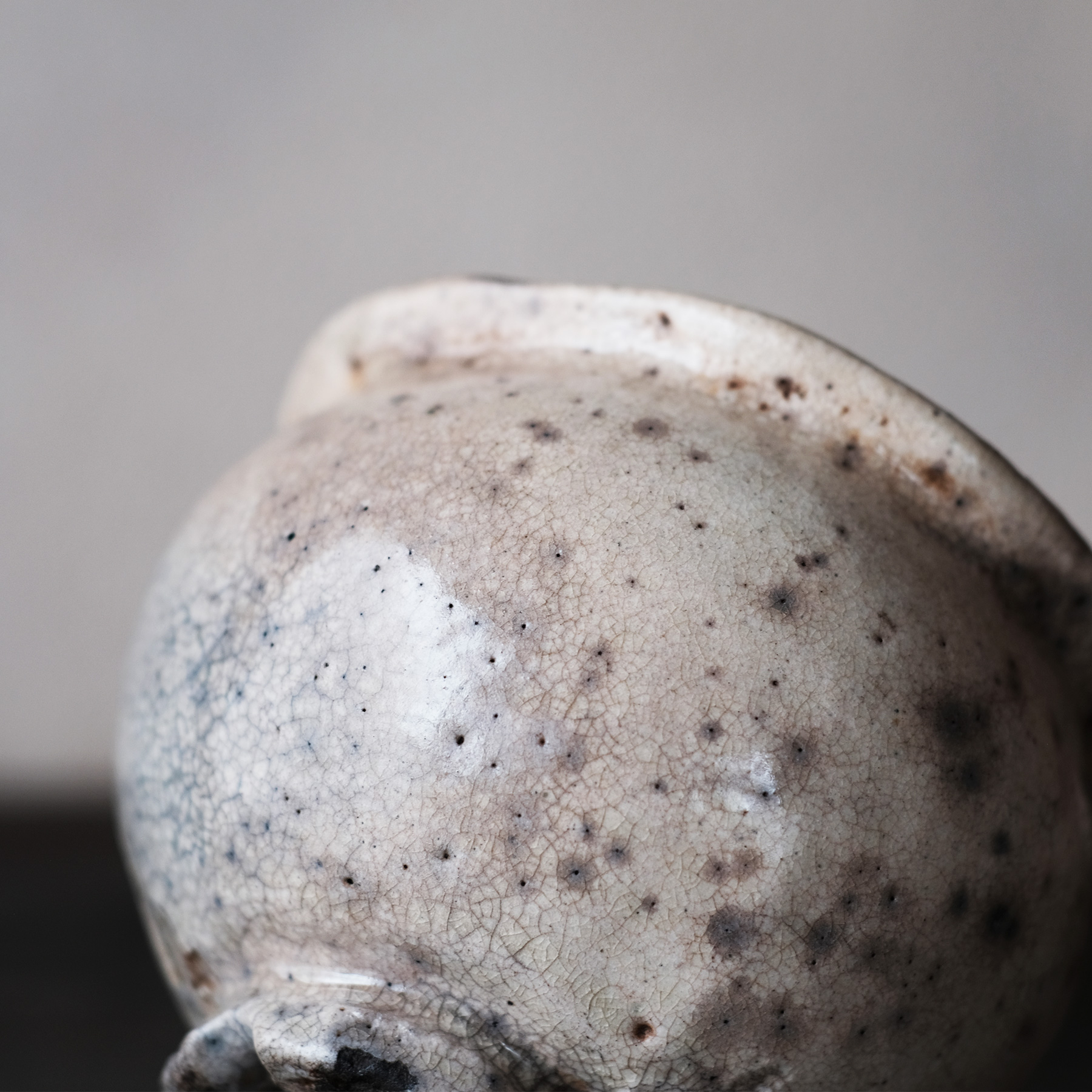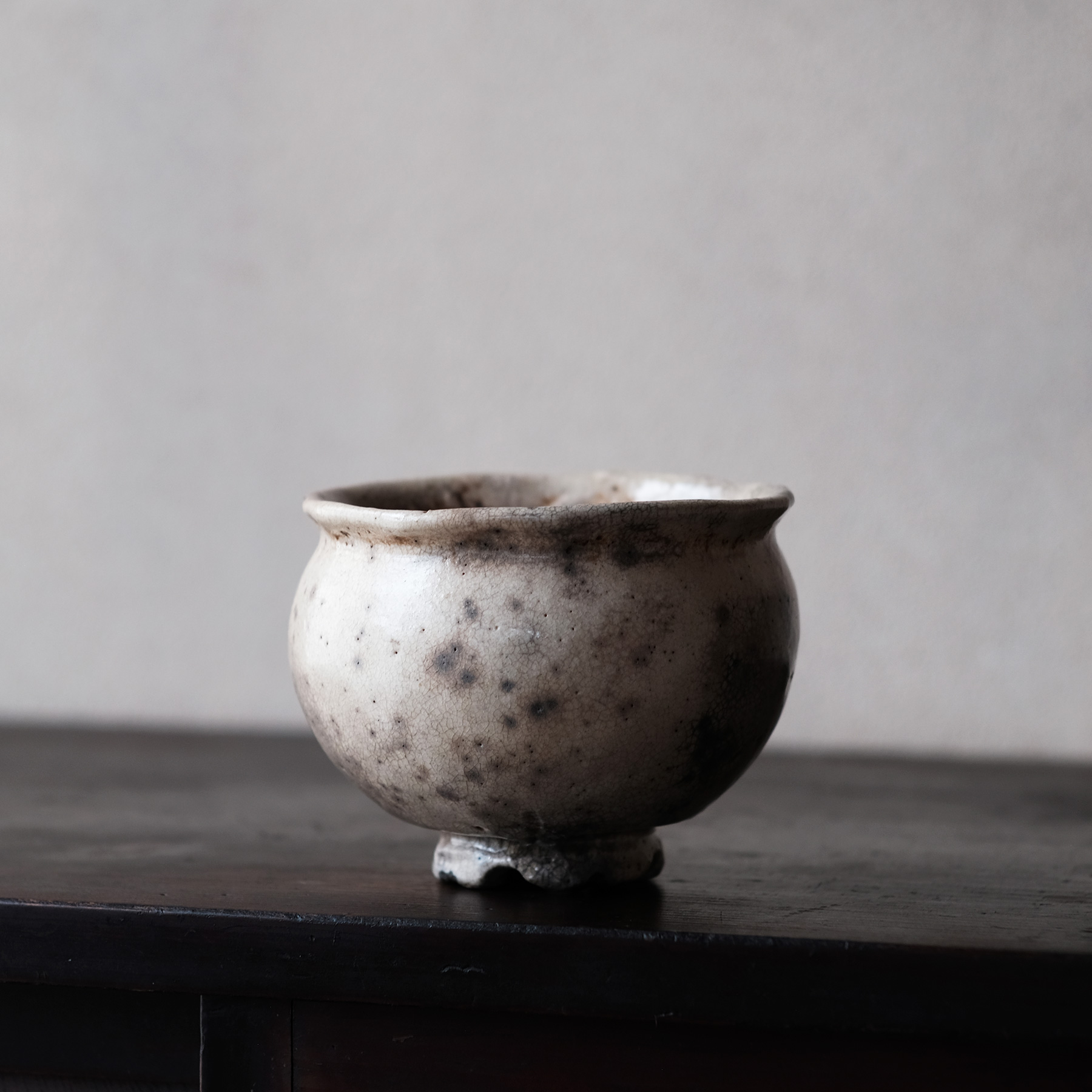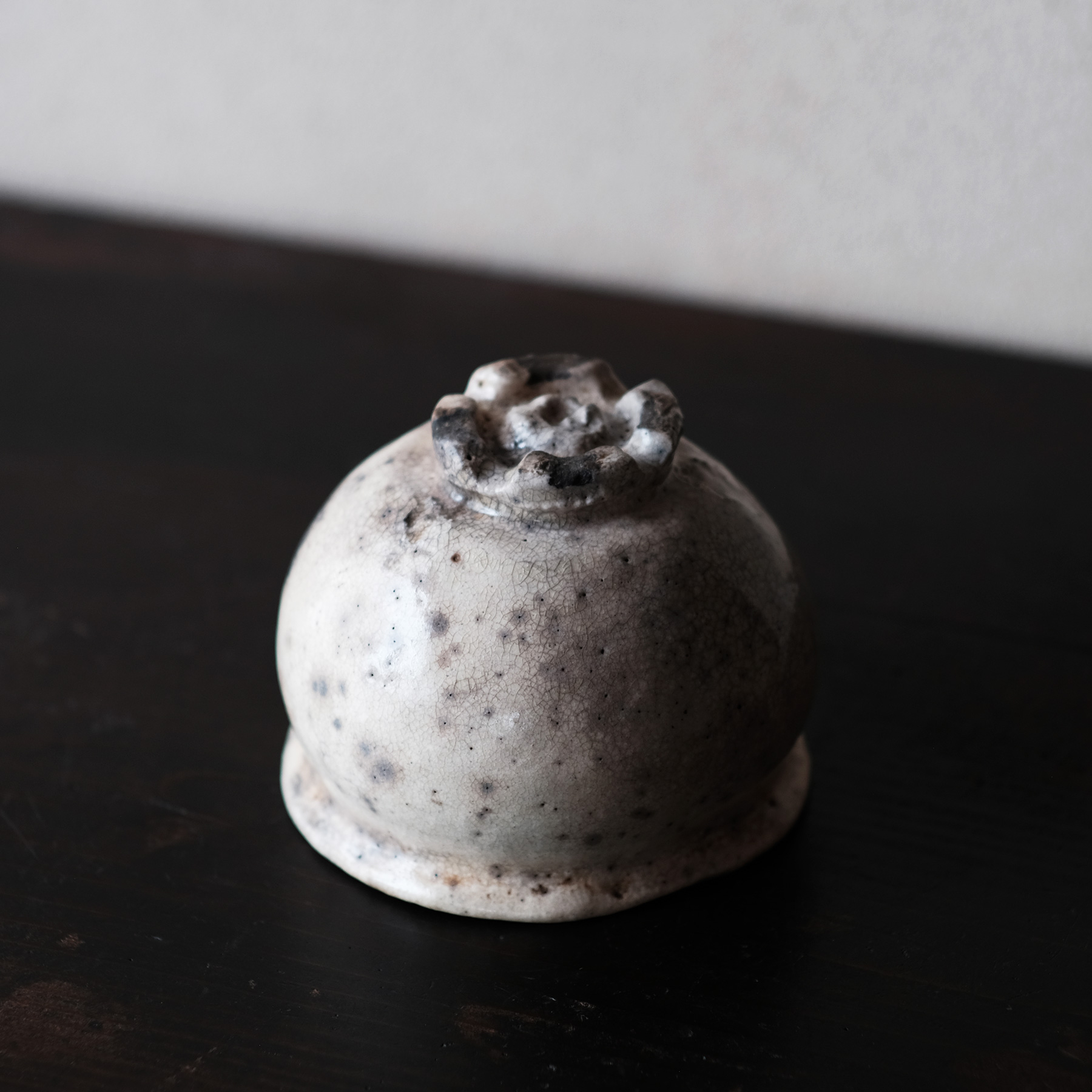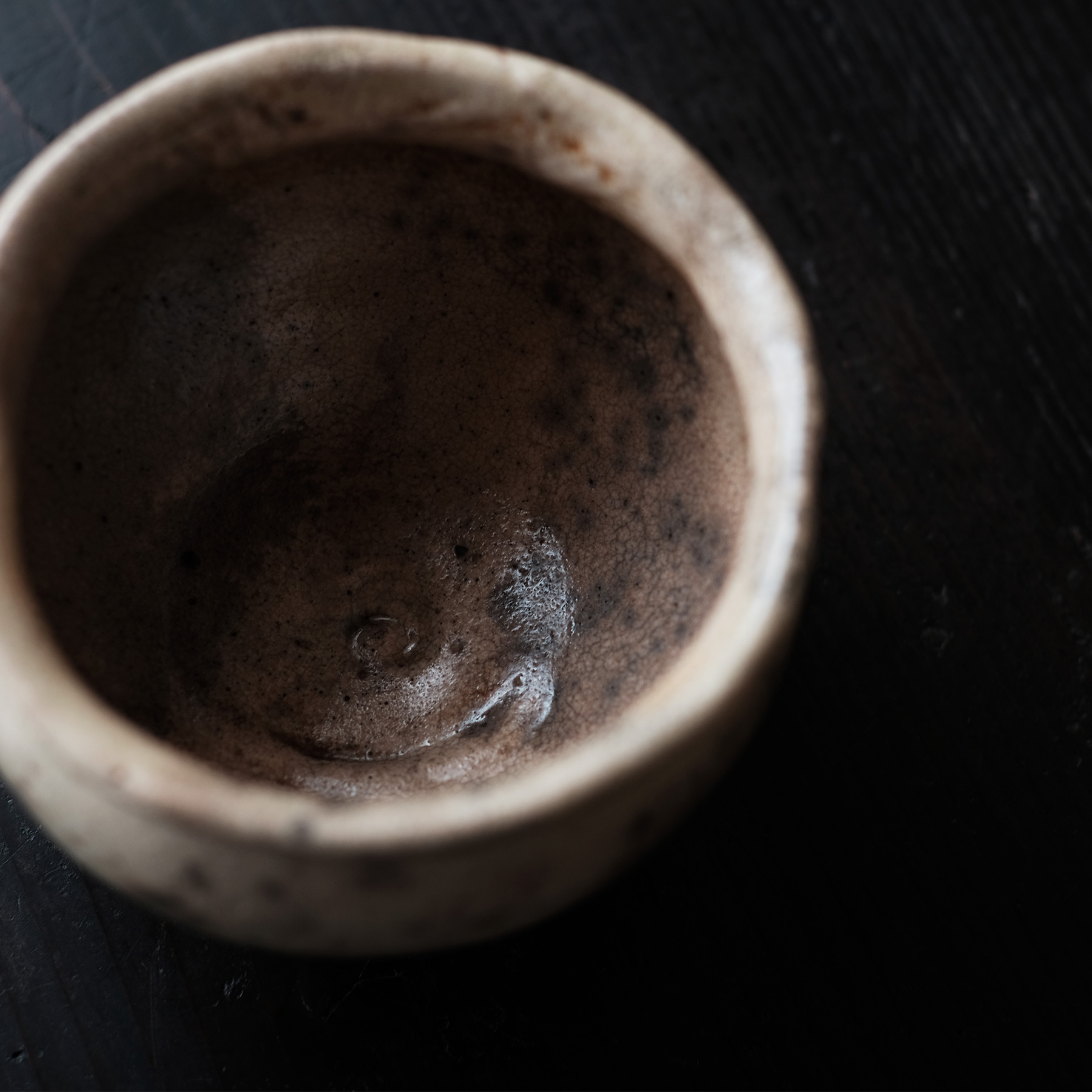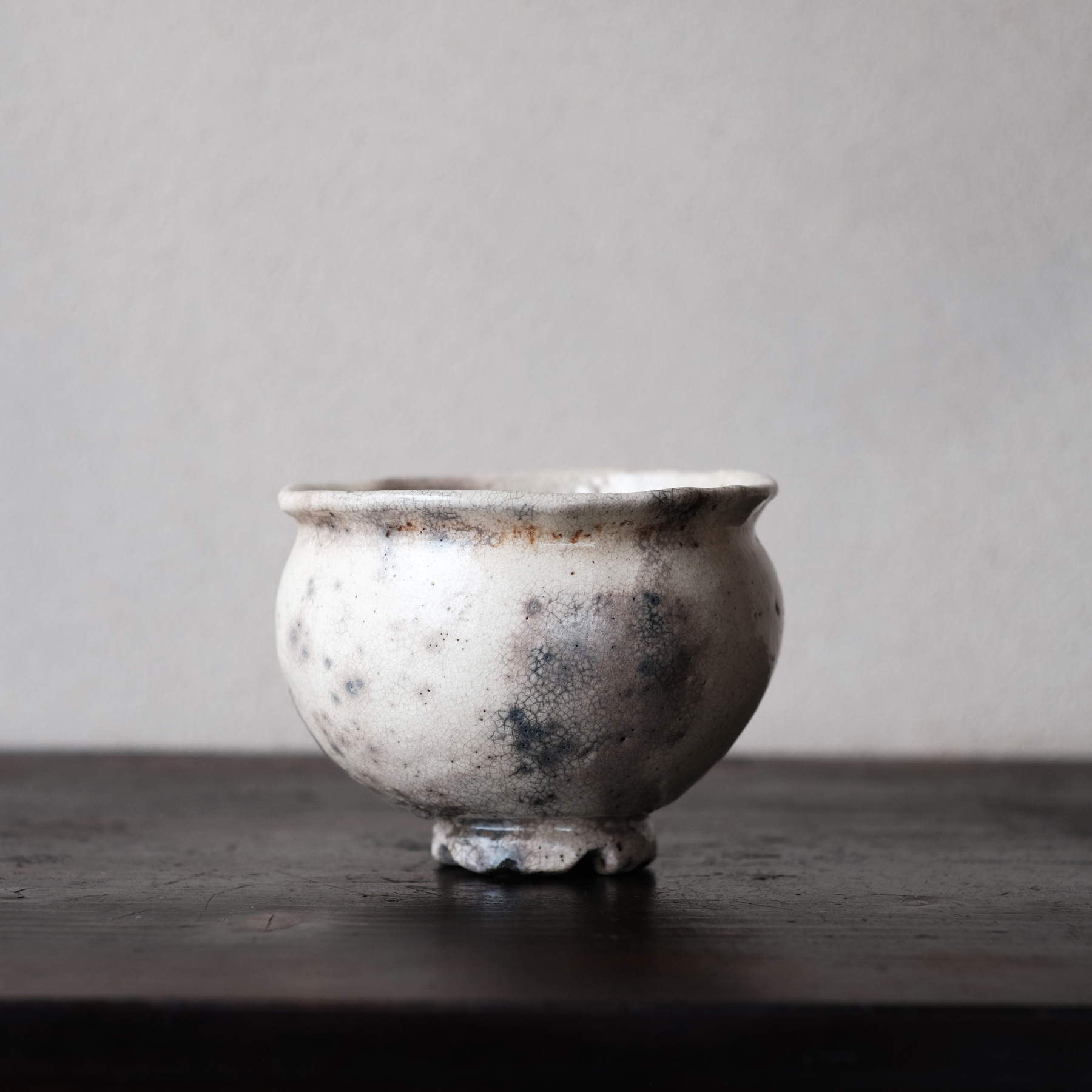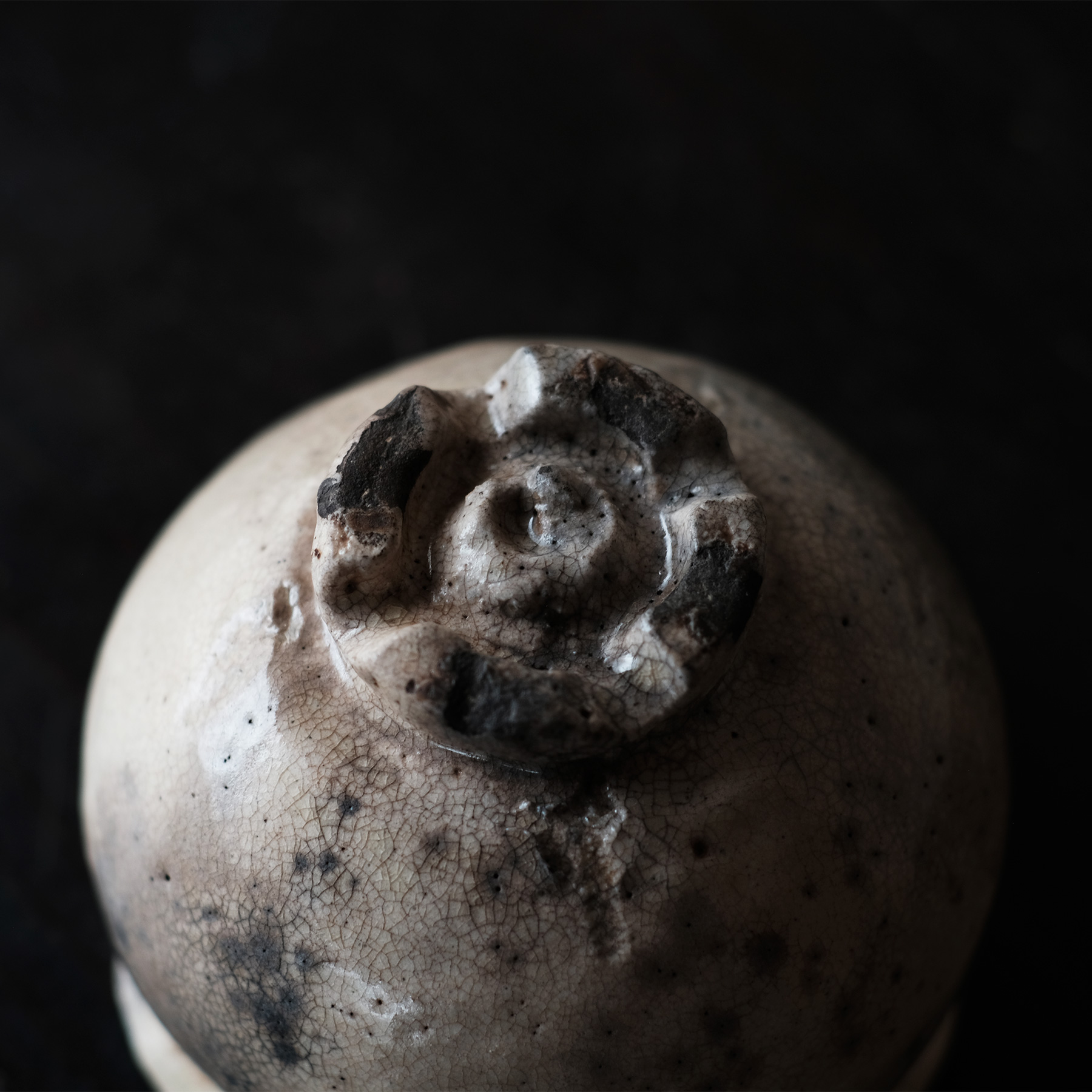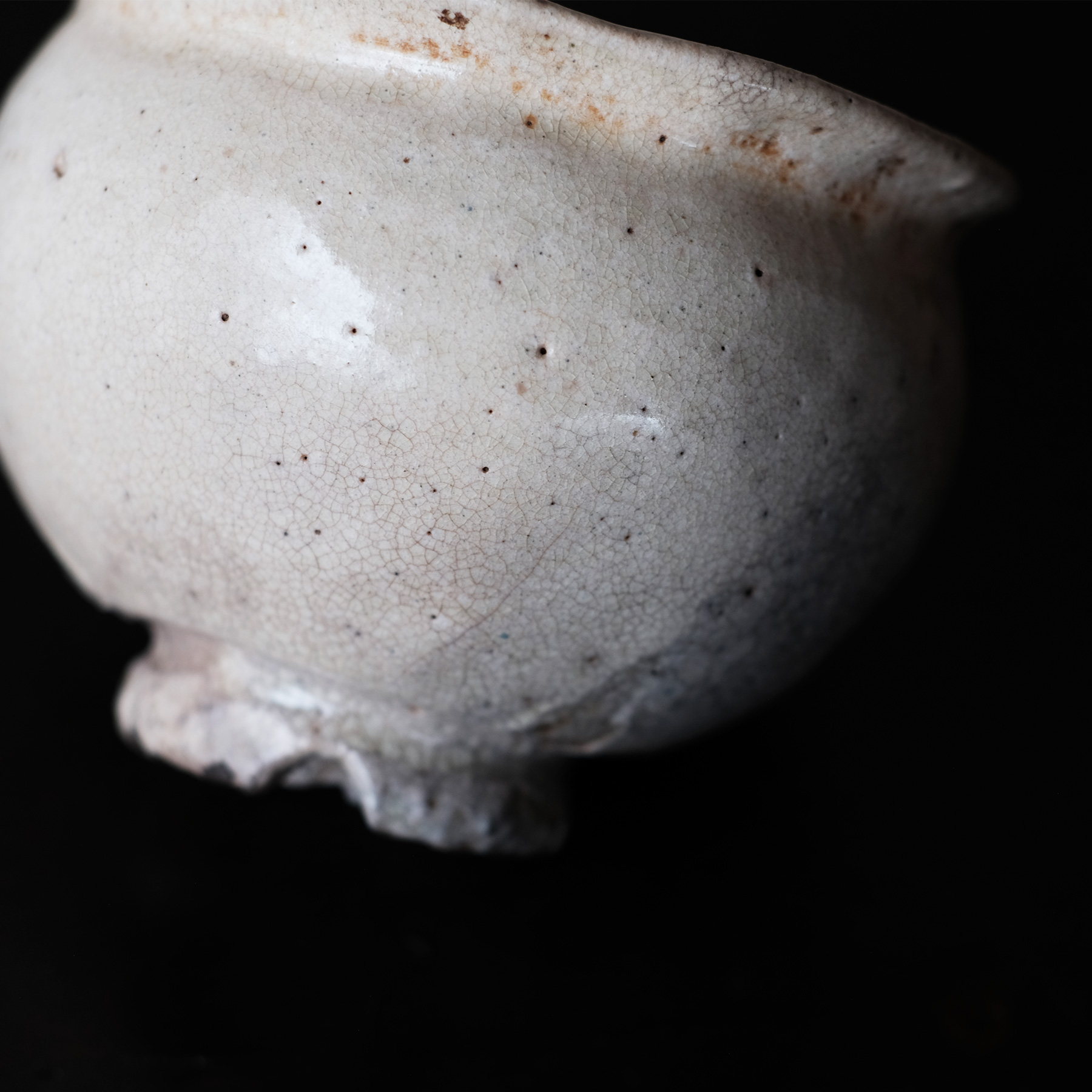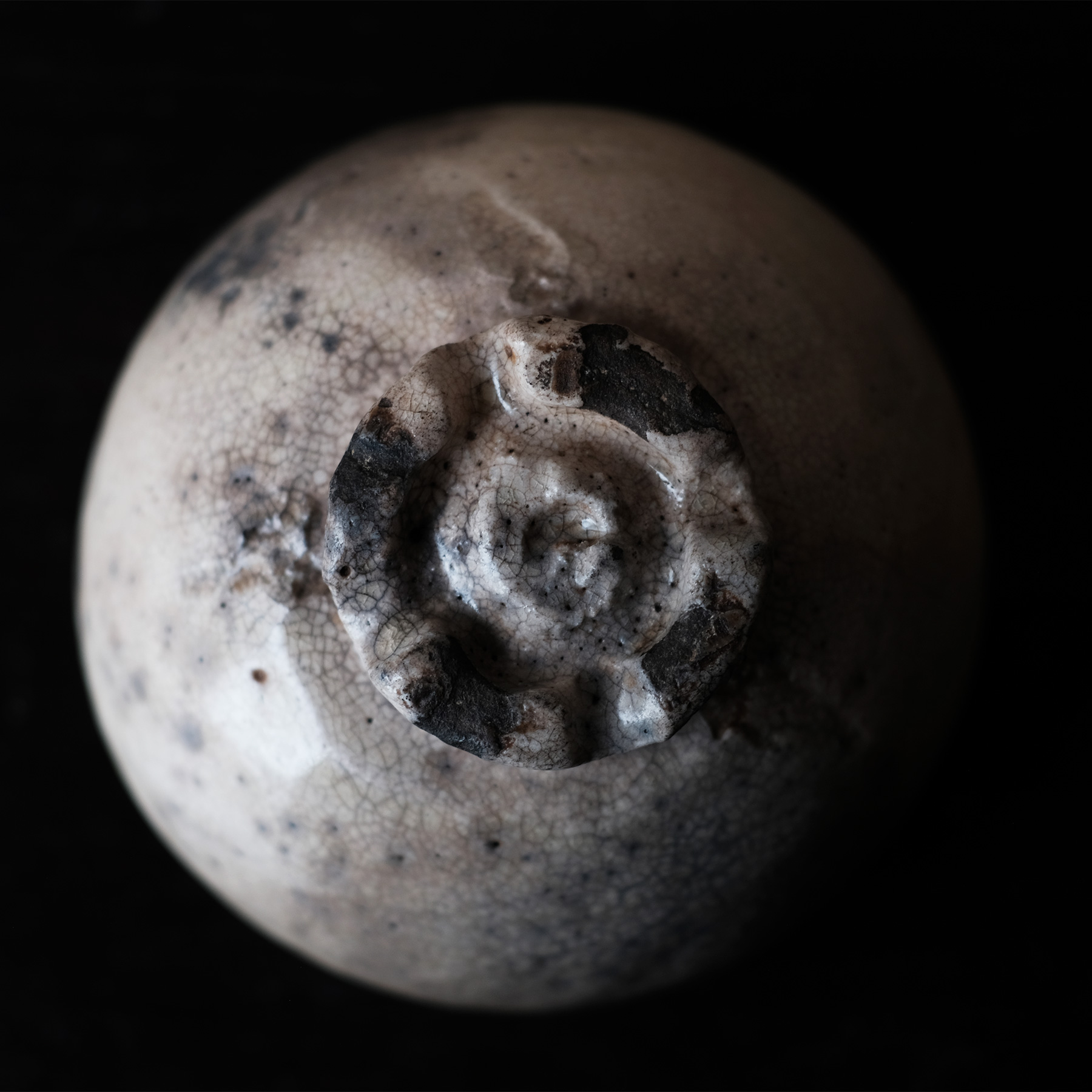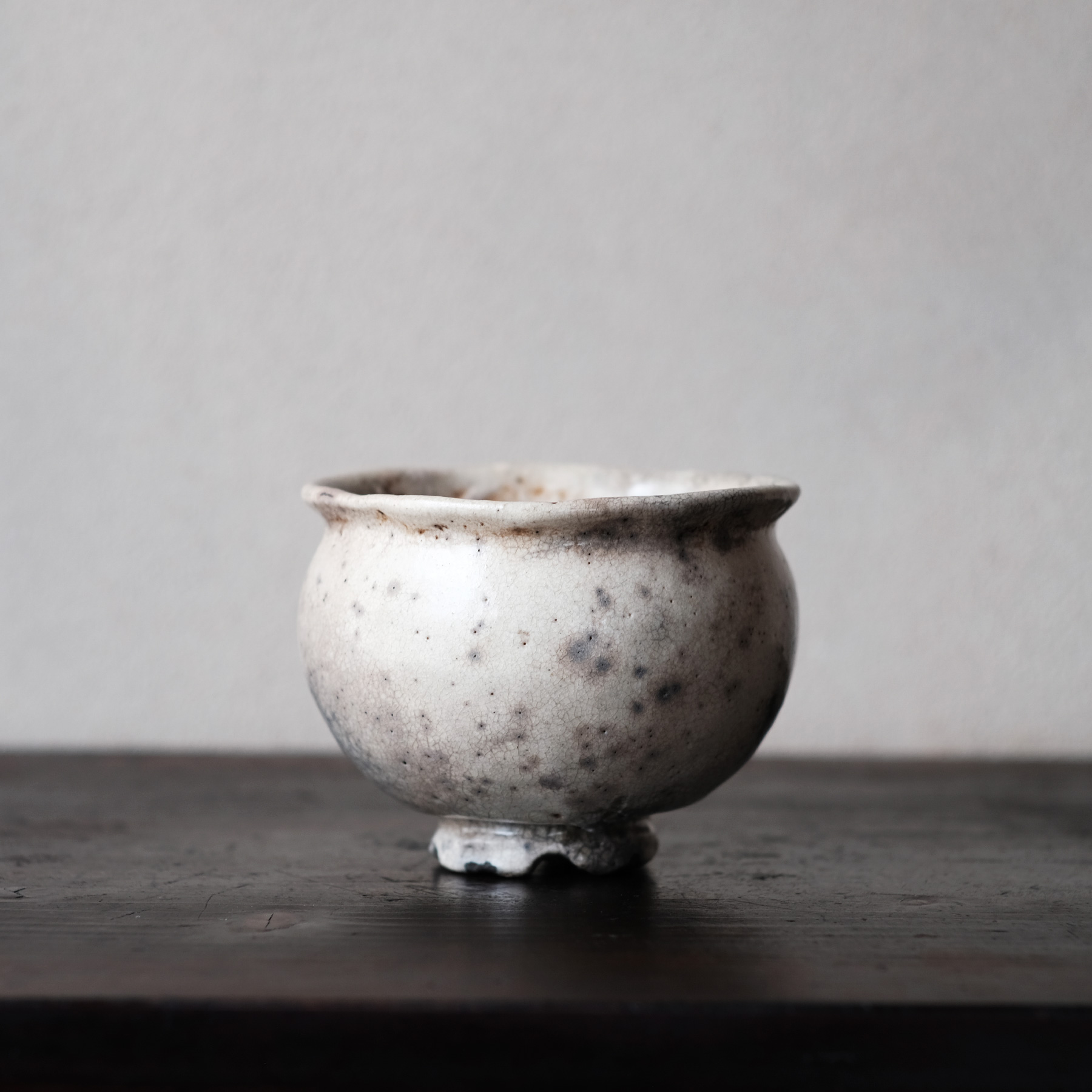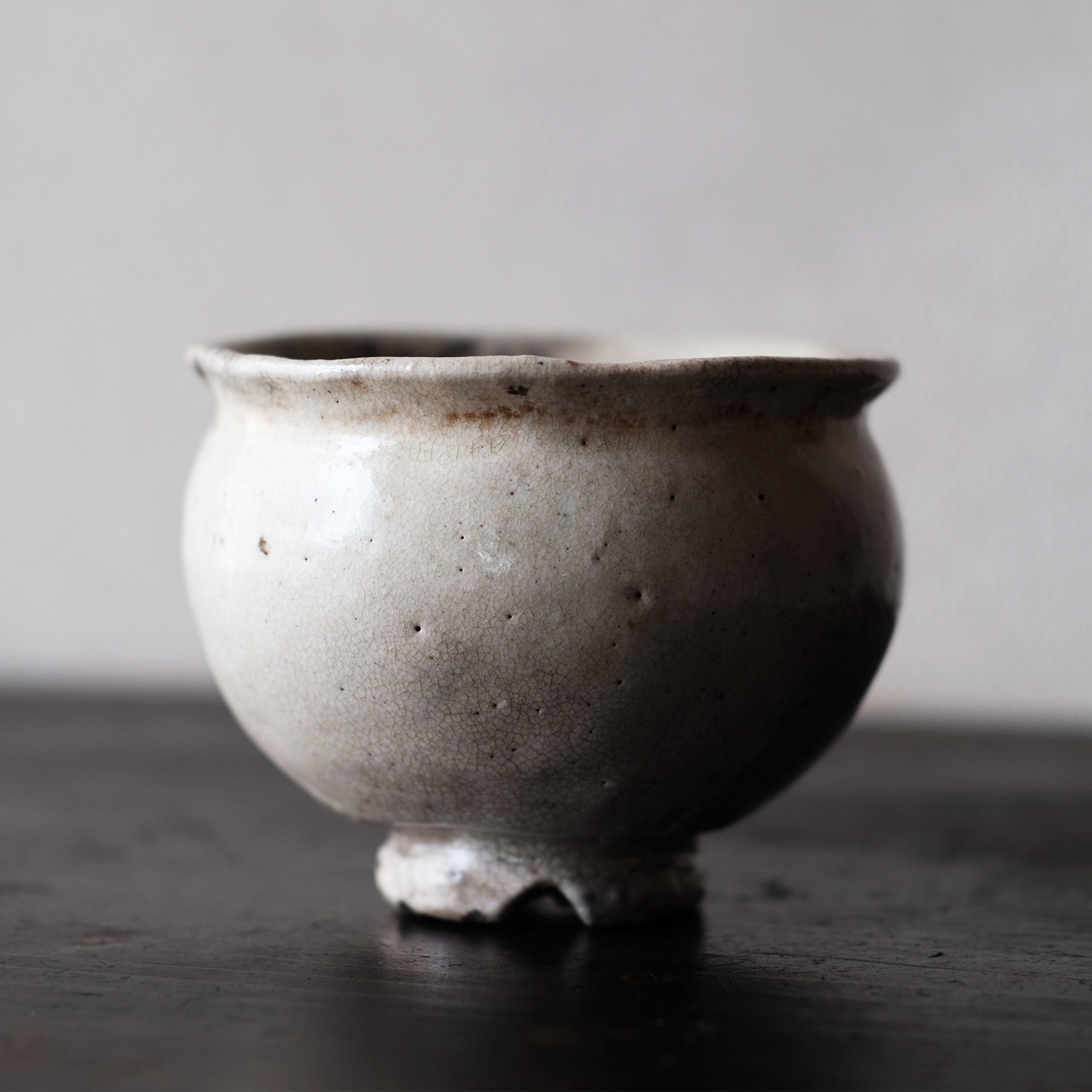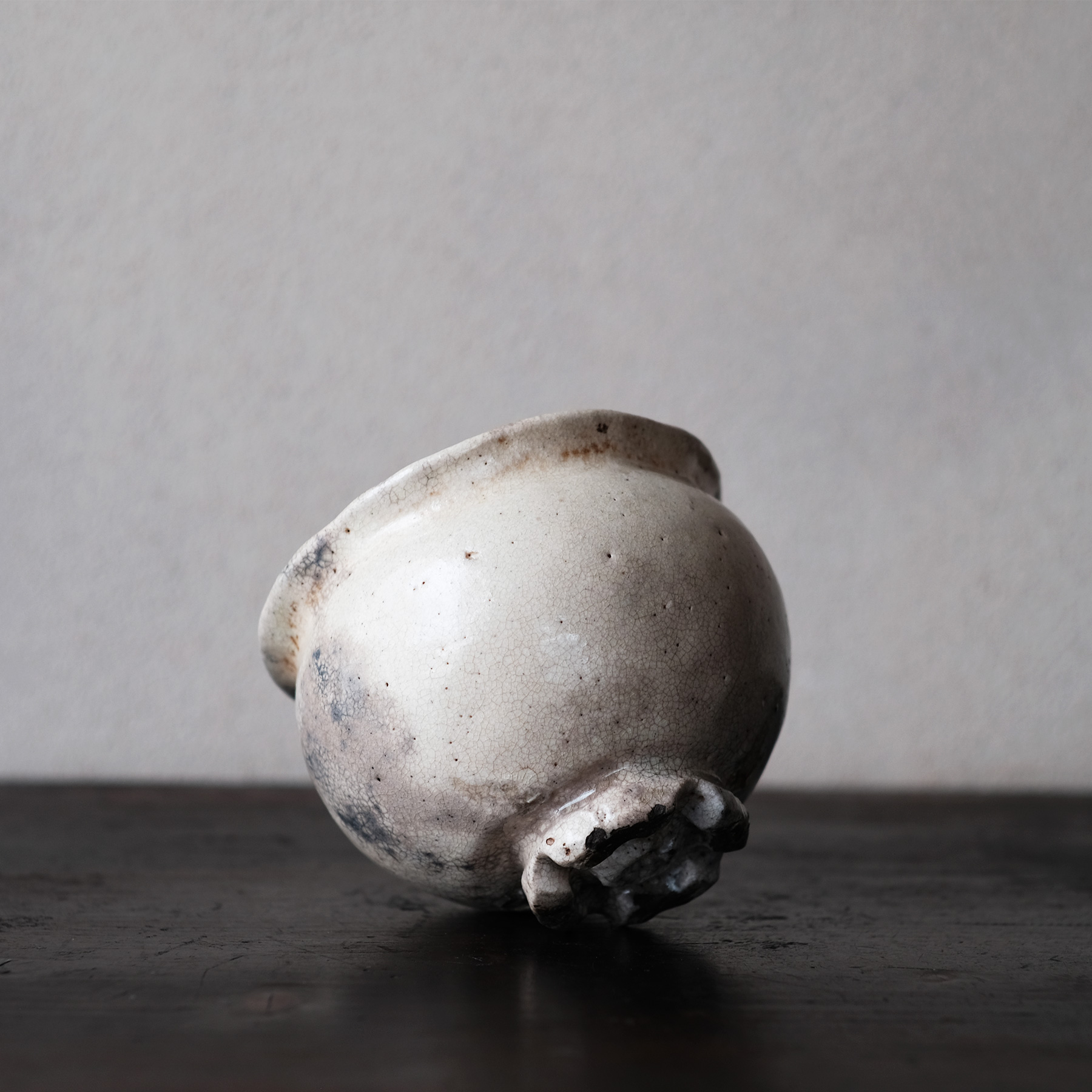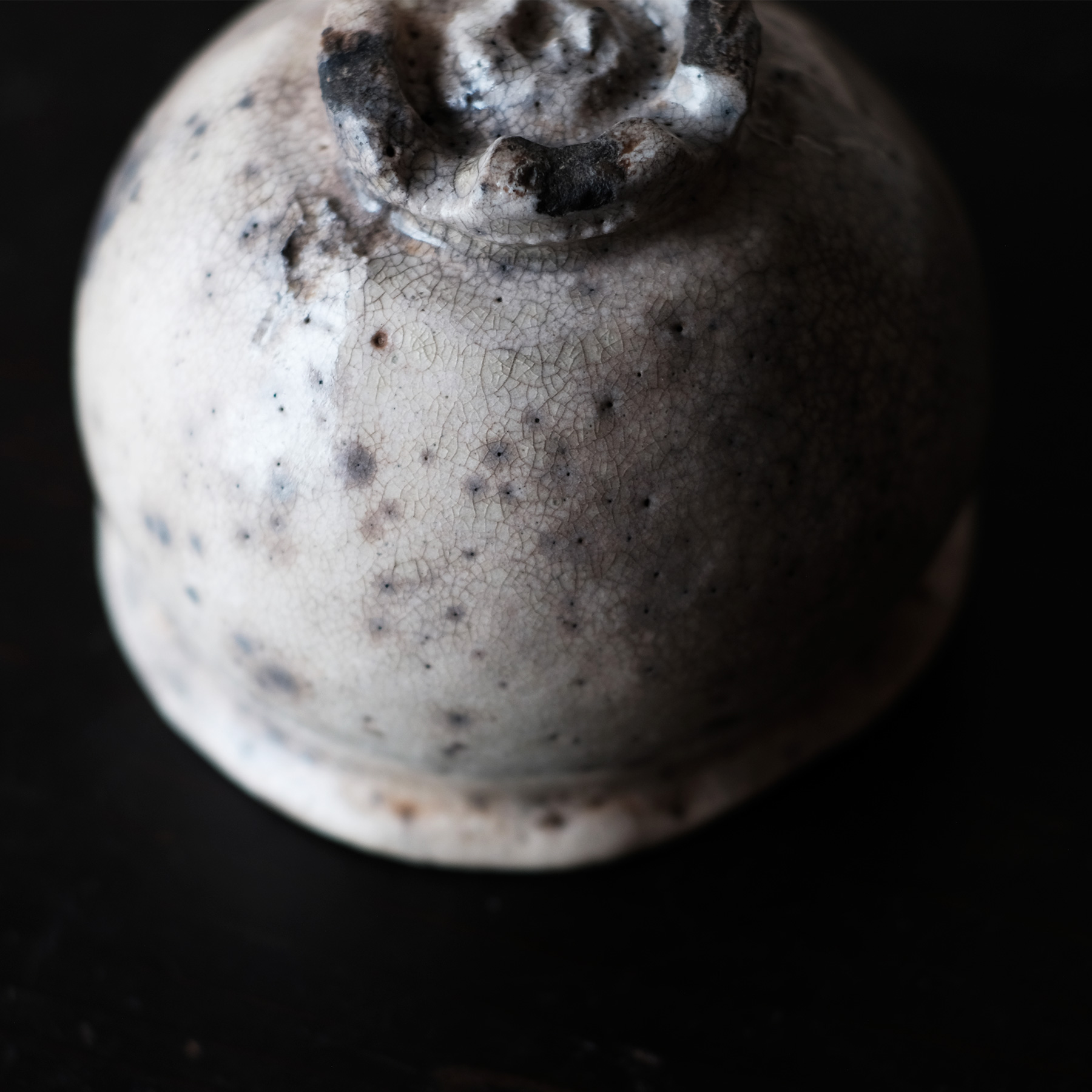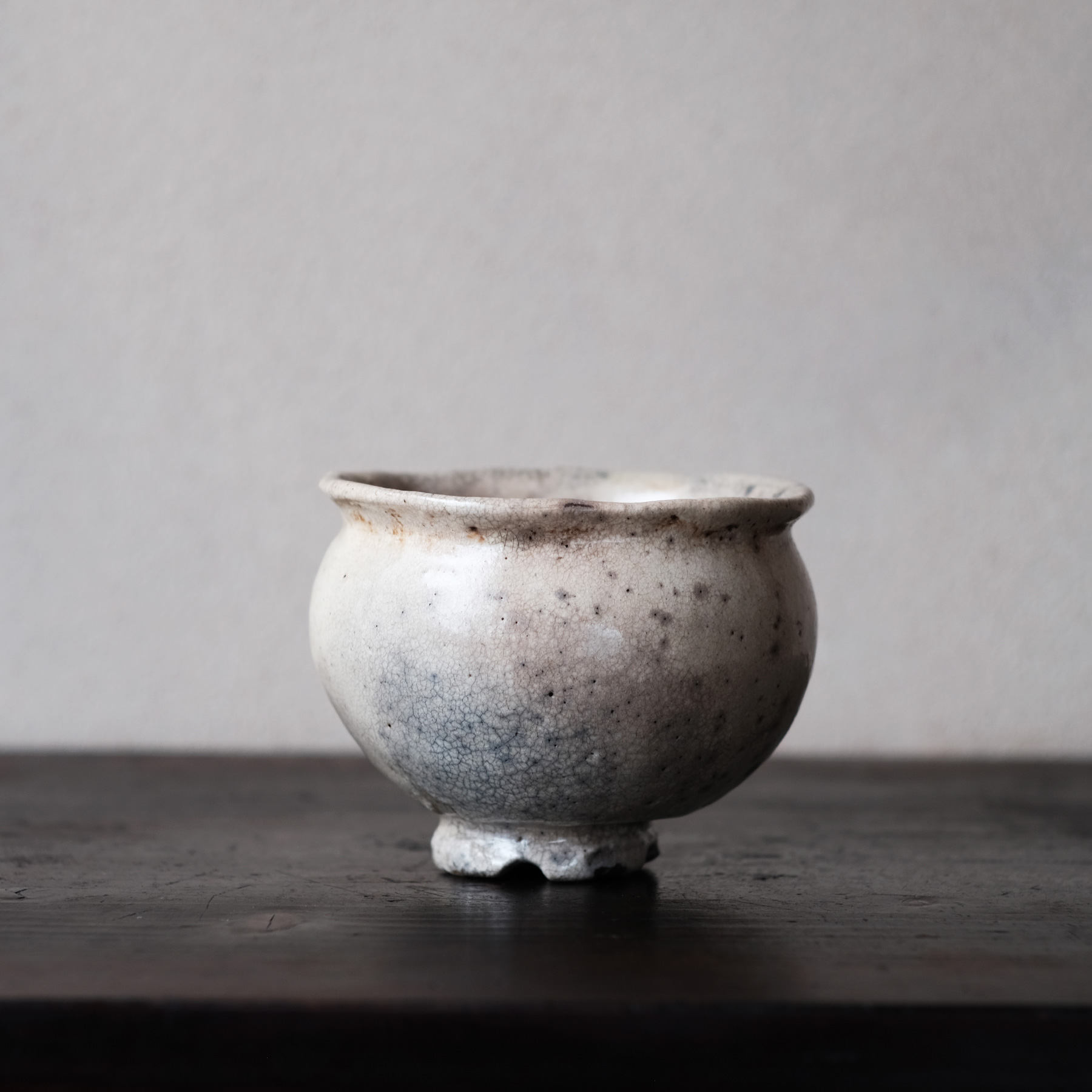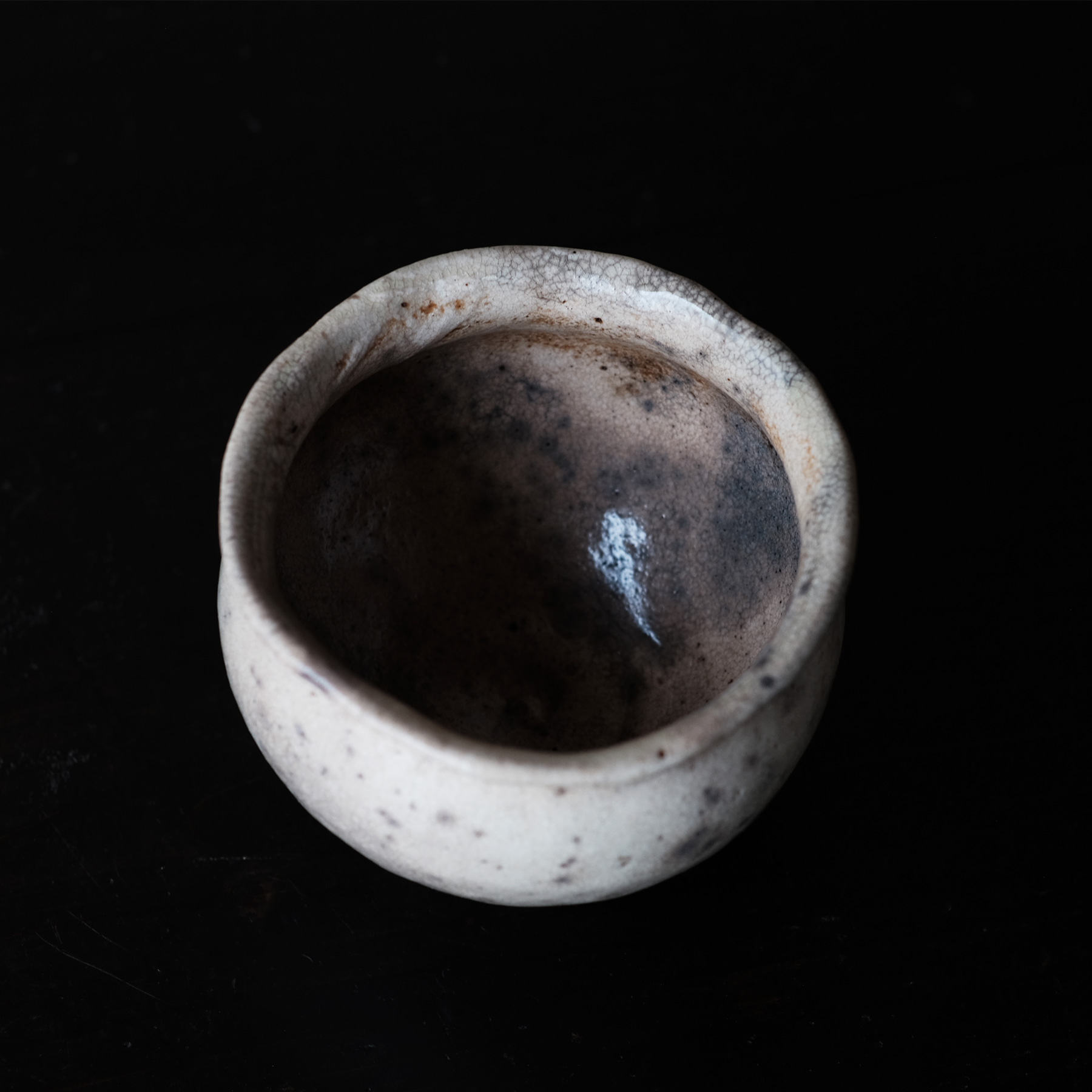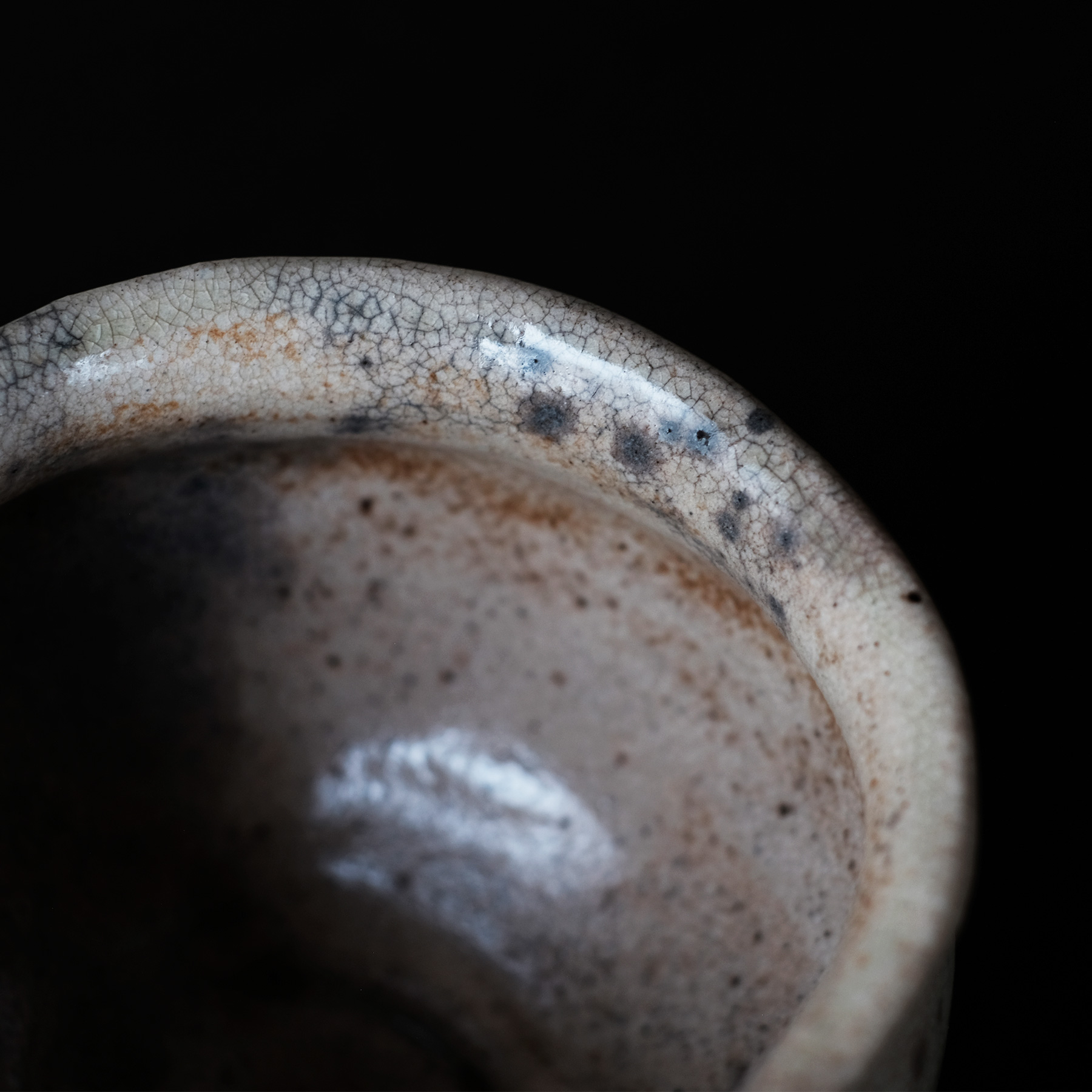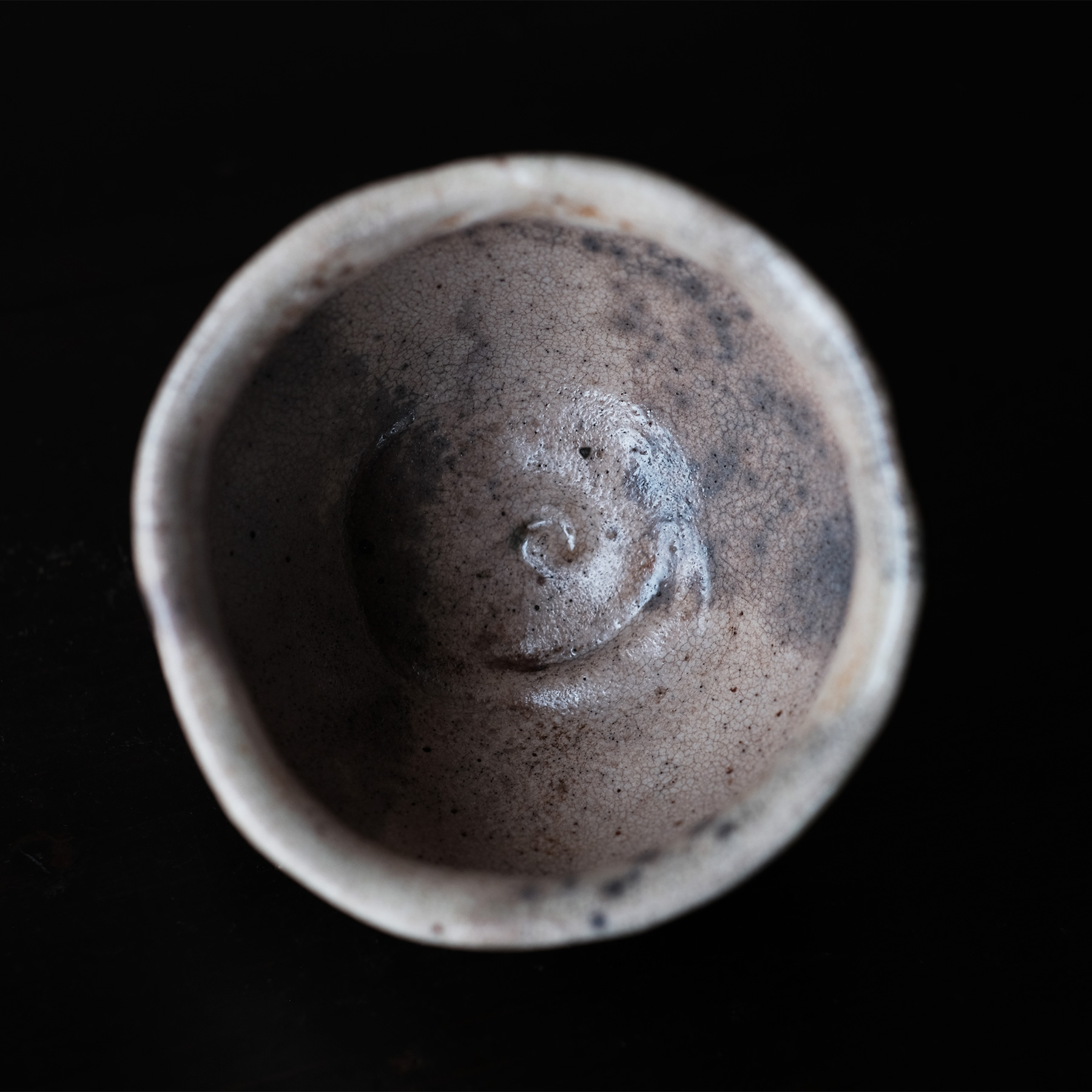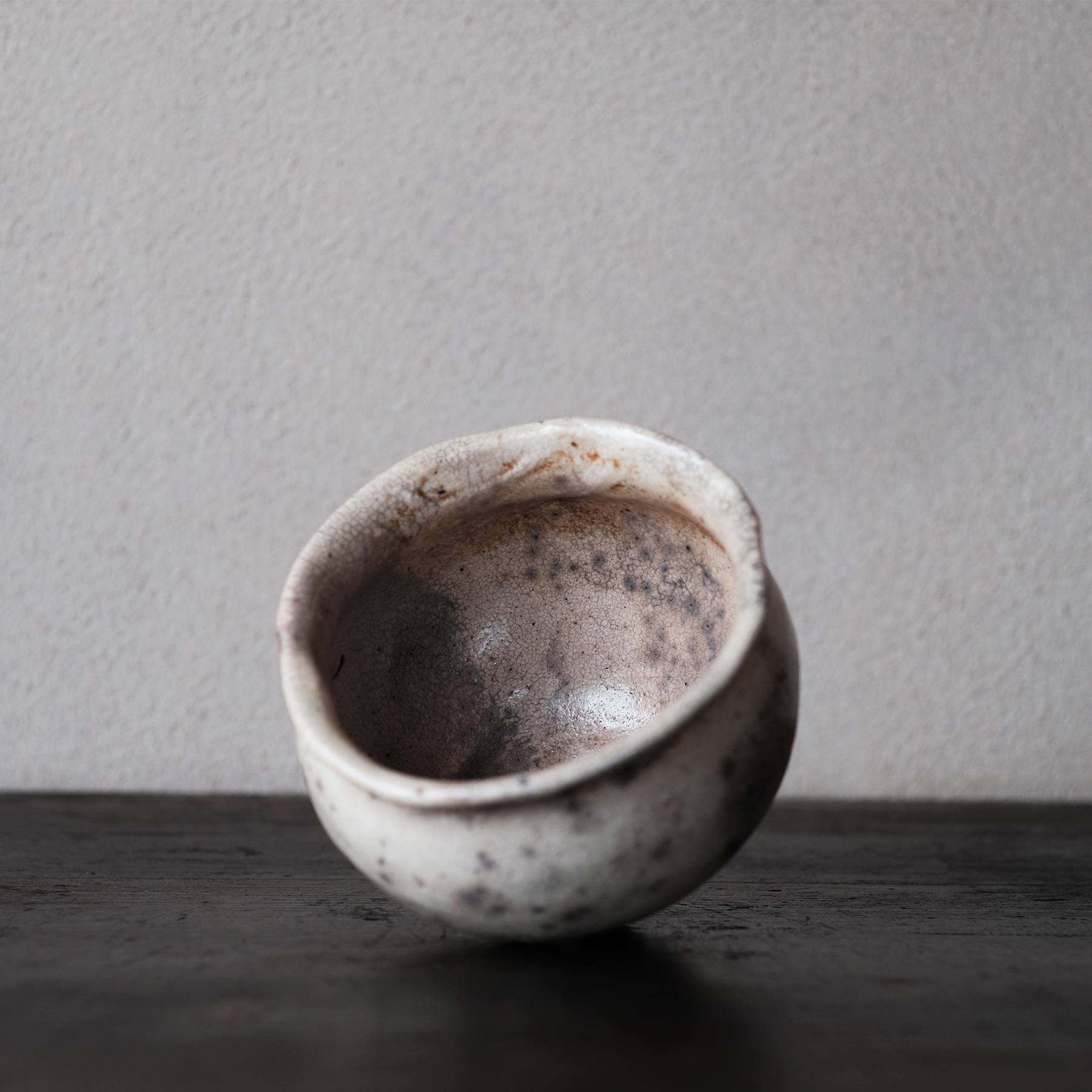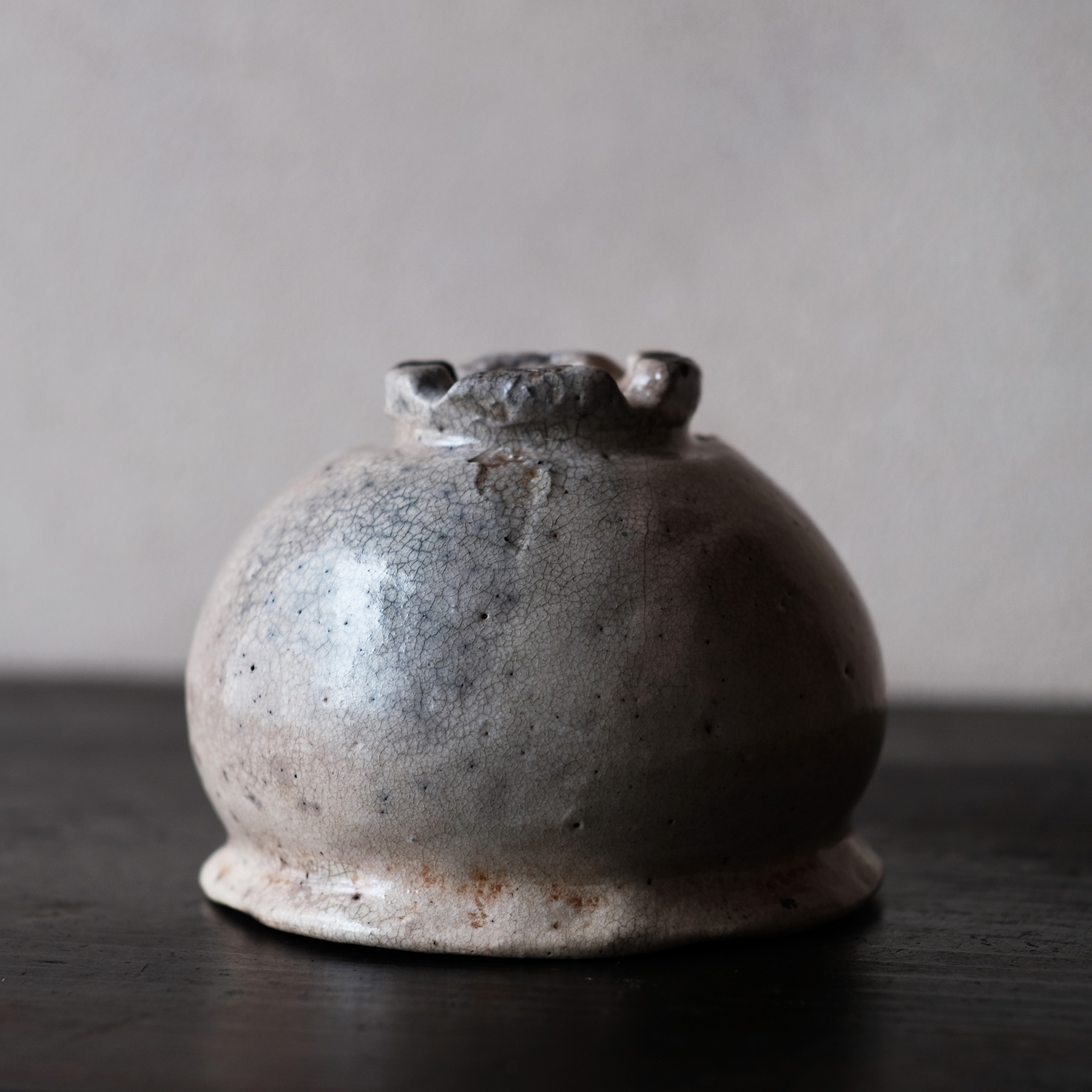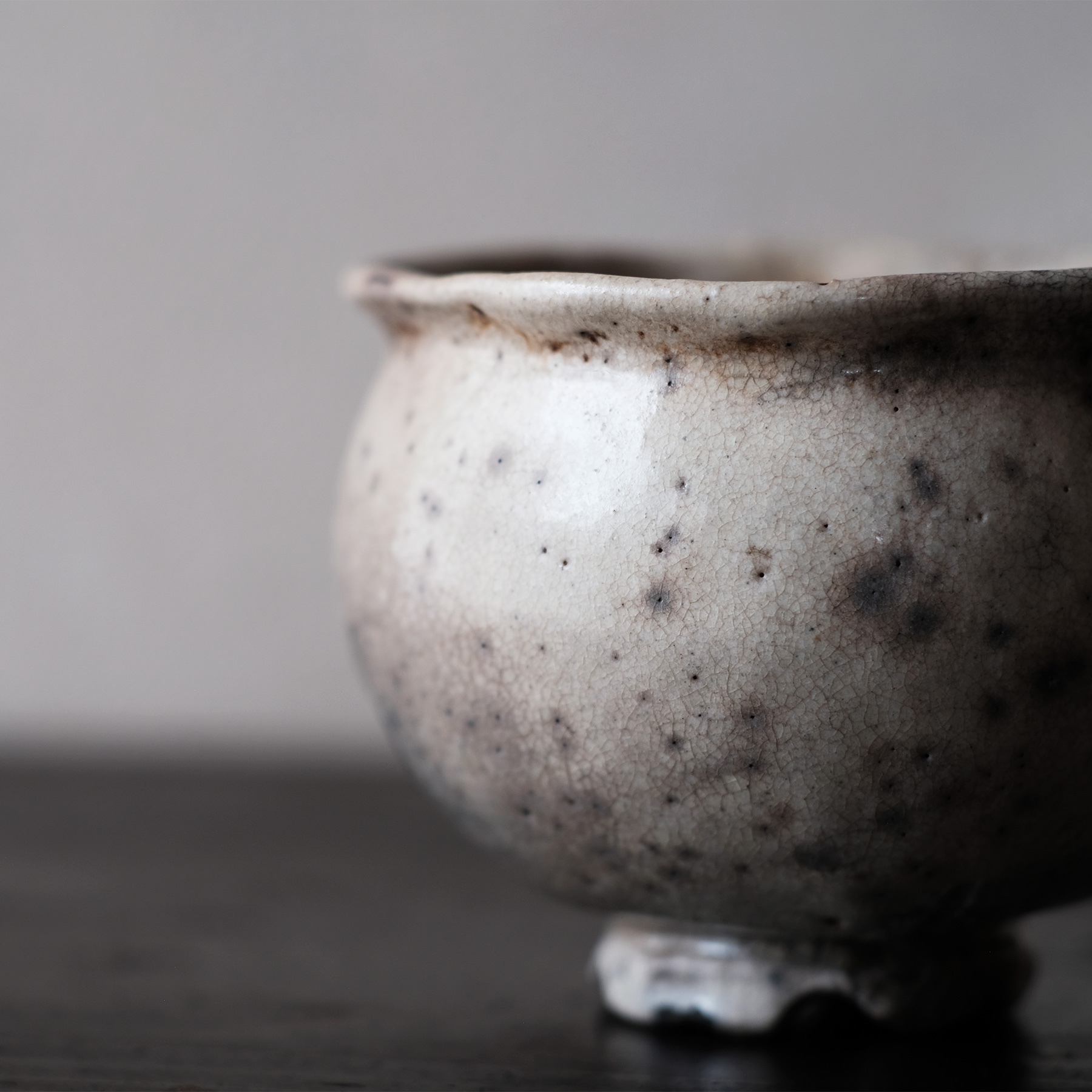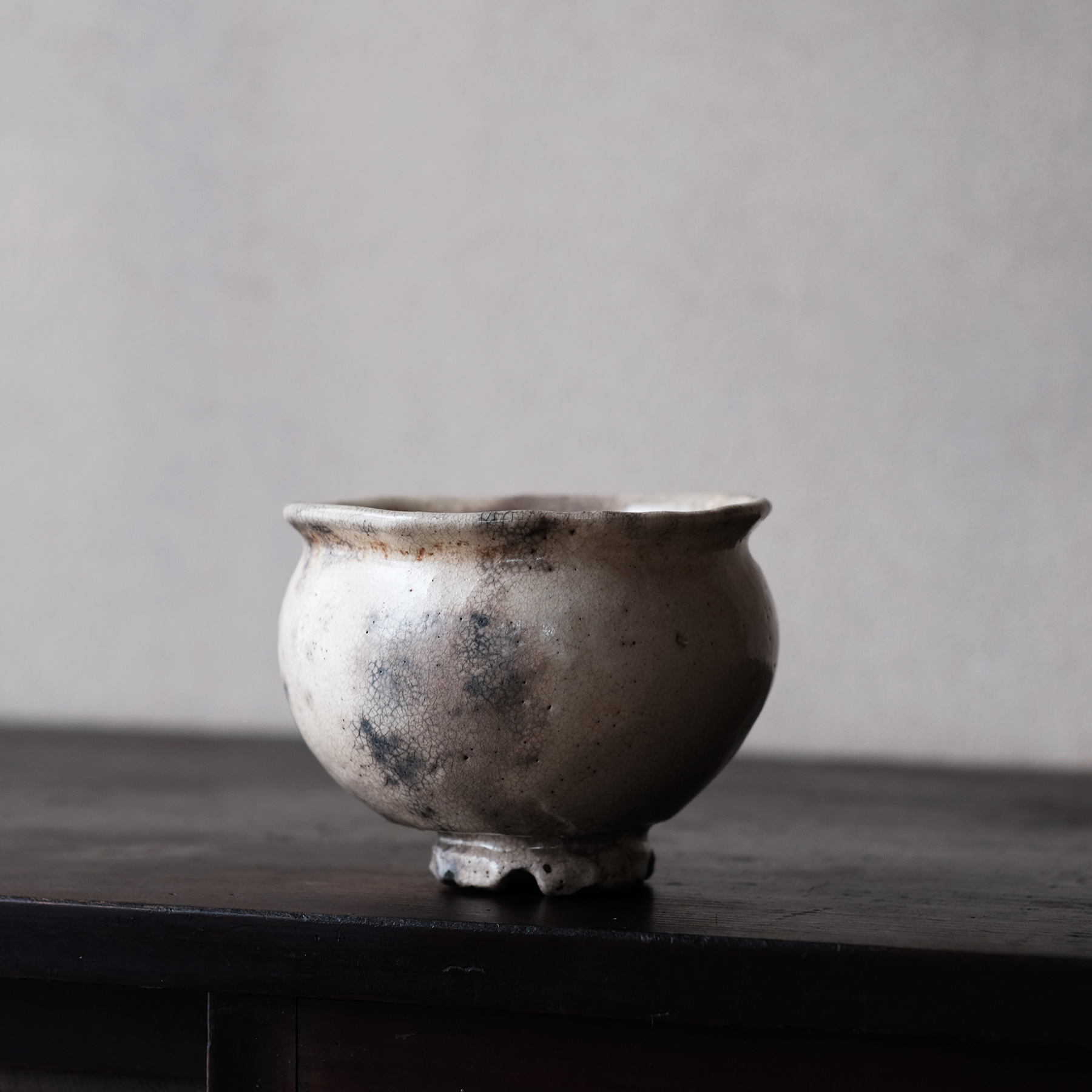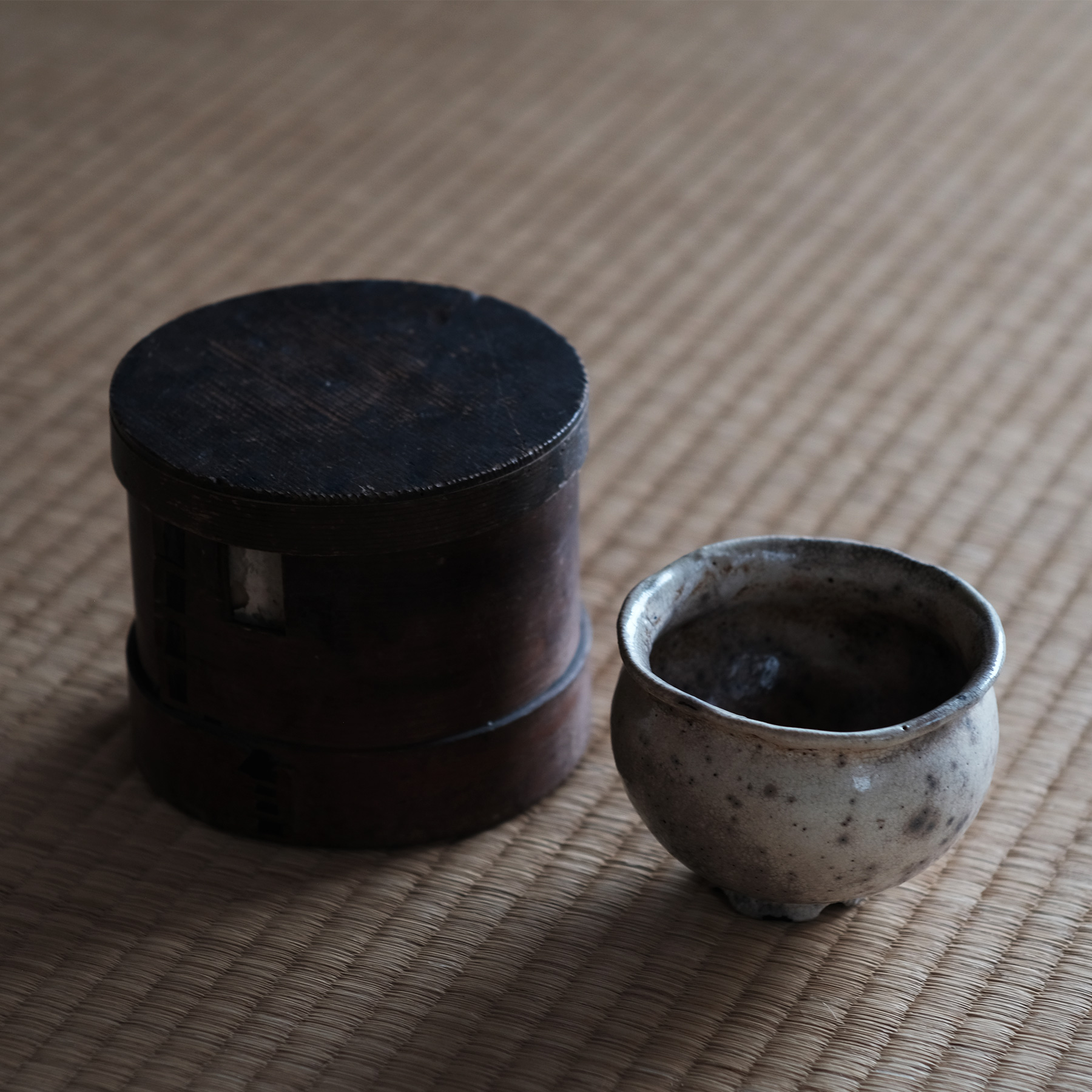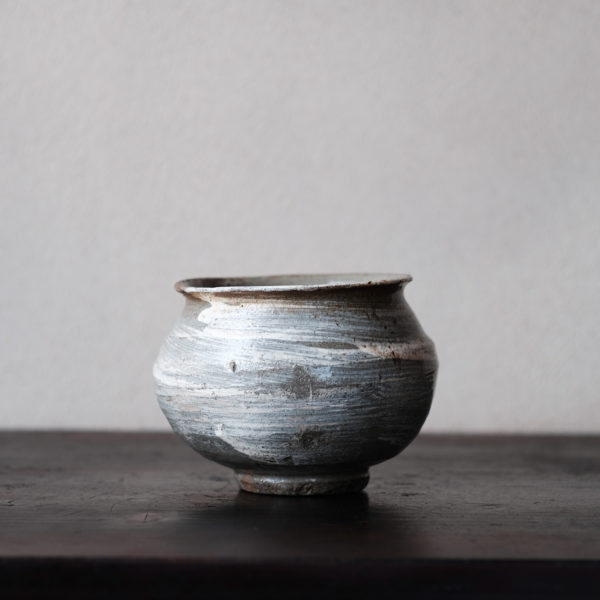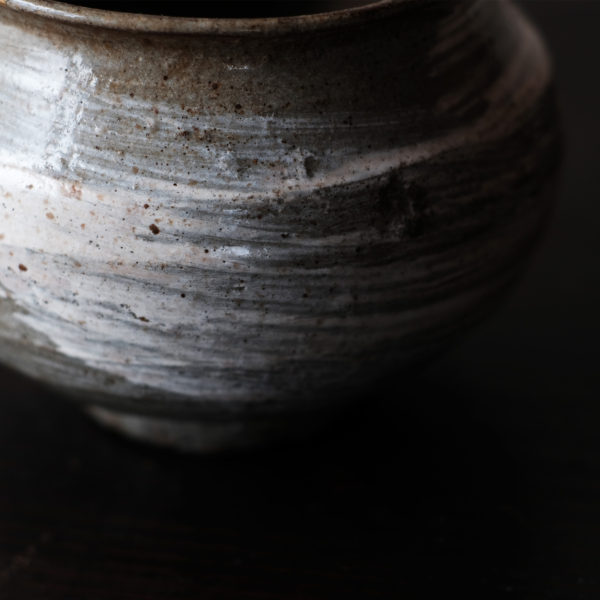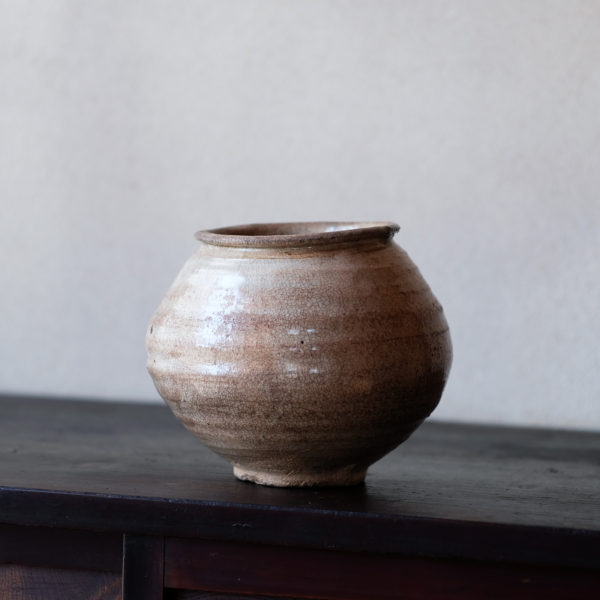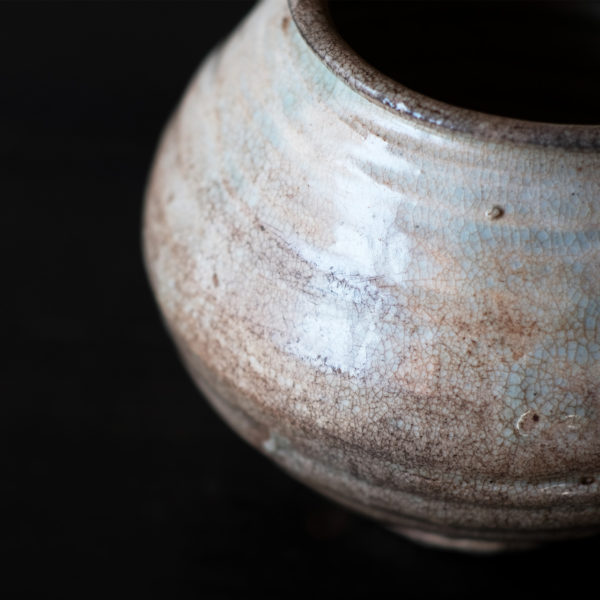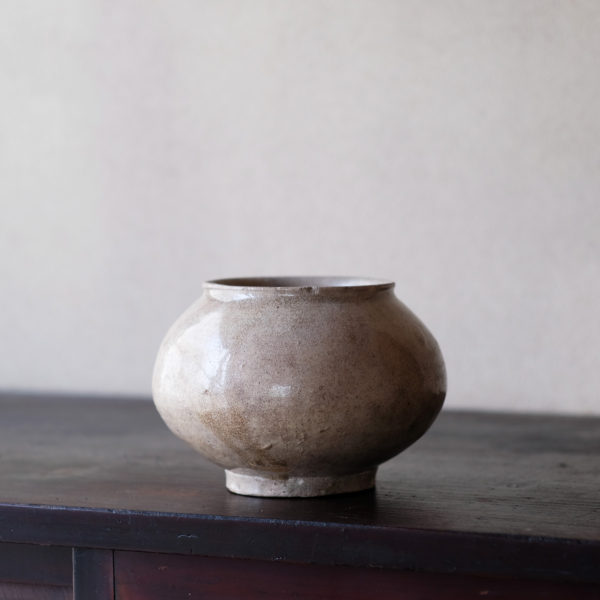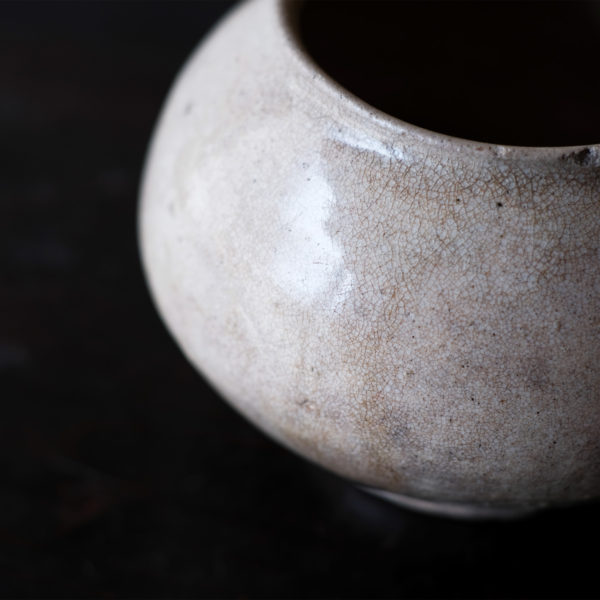Hagi Ware Teabowl with Four Split Foot
ARCHIVEDA captivating Hagi ware teabowl made in the early Edo period. It has a unique bulbous shape with an everted lip. The foot of the bowl features Warijumonji-Kodai (four split foot), and at the centre of the inside foot, a Tokin (helmet) is elegantly placed.
The origins of Hagi ware were traced back to after the Bunroku War, also known as the Japanese invasions of Korea (1592). A Korean potter, Shakukou Lee, who was brought from Korea and left in the care of Terumoto Mori, and his younger brother Kei Lee, who later came to Japan, opened a kiln in Hagi Castle. This piece, believed to be crafted by the second or third generation, is notable for its unique form influenced by the ‘Gohon-de’ style and its clay with a soft, textured surface. The accumulated tea stains over time contribute to a multi-layered scenery, enriching the tea experience.
Remarkably, there are no noticeable defects, and the condition is excellent. The teabowl is housed in a Magewappa (traditional bending woodcraft) box.
- The description will be updated as our research progresses.
- Images may differ in color from the actual products.
- Please read "Terms" when purchasing.

